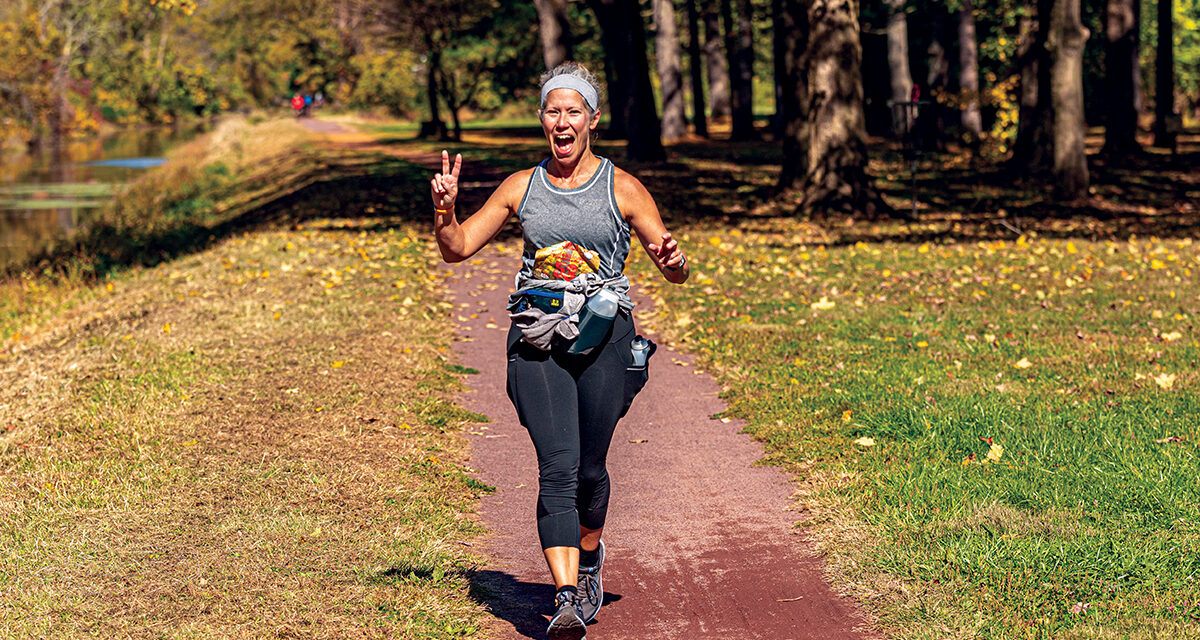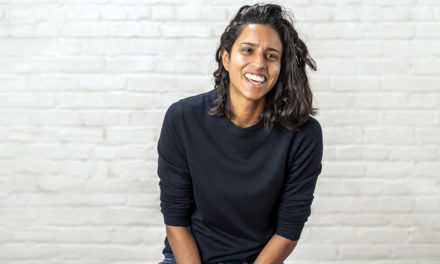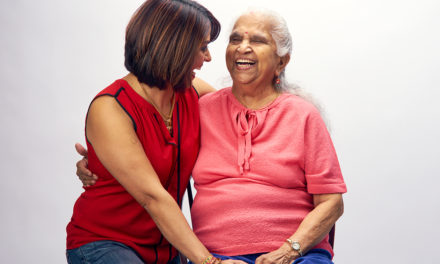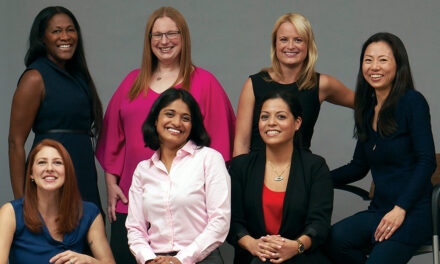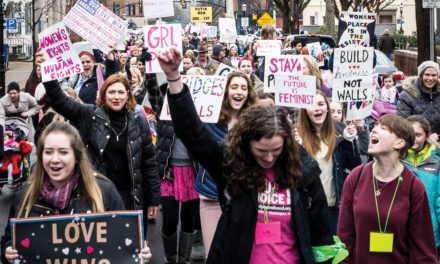While we tend to focus on all the ways the coronavirus pandemic has kept us sidelined, many of us have come up with creative ways to make life—yes, even life on lockdown—a little better. Here, four women share their favorite COVID escapes.
During COVID…Holly Barbera ran a marathon
When the first wave of the novel coronavirus hit the Northeast and everyone started living life on lockdown, Holly Barbera was in a pretty dark place. March was cold. April was rainy. Barbera only left her house to go to the grocery store and even at that, she’d aim for one trip a month to cut back on her potential exposure. She knew she needed to get outside more—for her sanity, and for some exercise. So, she started running every day.
Just a few months before COVID-19 was all anyone could talk about, Barbera started dating Sean, an endurance runner who’d completed multiple ultramarathons—100-plus mile races. As the two started spending more time with each other, “bubbling” together during the lockdown, things started looking up. “Sean is patient, kind, and has a real sense of adventure,” says Barbera. “Spending time with someone who was finding ways to continue to live his life was so inspiring to me.” So, when Sean suggested Barbera run a virtual marathon, she decided to go for it.
That’s not to say she didn’t battle some serious self-smack talk. “Once I got over that and stopped comparing myself to the runner I thought I needed to be—someone who could easily run far and fast—I realized that I’m someone who thrives on a plan,” she says. “Give me a set of procedures to follow and I’m on it, and I’ll learn to modify and adapt as I go.”
And so, with a plan in place and Sean as her new boyfriend and running coach, Barbera started training for her virtual marathon. Her daily training runs became a refuge. “I run without music because it helps me really be in the moment,” she says. “I’d pay attention to my breathing, my cadence, my pace, and for a while, that would help me forget all of the awful stuff that was going on in the world.”
If she was tired one day, she’d hit the pavement. If she started doubting her ability to finish the race, she’d lace up her shoes and go for a run. “At one point I realized that it’s not about how fast you go, it’s all about just showing up,” she says. “Sean would often tell me, ‘It’s just about time on your feet.’ I quickly started to see that it’s not about being perfect every time you go out for a run because, over time, you’ll look back and realize you’ve gone further than you ever thought you could.”
As it turned out, finishing 26.2 miles was way harder than Barbera expected. She approached the final third of the run—the proverbial “wall” marathoners and coaches talk about—and wished it would just be over. She walked a little, but she kept moving. “I showed up,” she says. “One of my favorite lines that I repeated during my race was ‘Comfort is a lie.’ It echoed the loving advice Sean gave me numerous times throughout my training: ‘Suck it up, buttercup.’”
Barbera, who got engaged to Sean in November, is still running. His coaching inspired her to take on that role—albeit unofficially. “I try to encourage people that whatever it is they might want to do, whether it’s something physical like running or revisiting an old hobby, start now,” she says. “I tend to be someone who hesitates to start things if I think I’m not going to be good enough, but I’m realizing that I’ve been holding myself to ridiculous standards. If doing something speaks to your heart, go ahead and do it.”
After all, it’s not like you’re going to paint the next masterpiece or run 50 miles tomorrow. Just find a way to start. “Make a plan, practice it, tweak it, and adapt to change.”
What I know now is that if doing something speaks to your heart, go ahead and do it while focusing on how it makes you feel rather than the result you may be after.

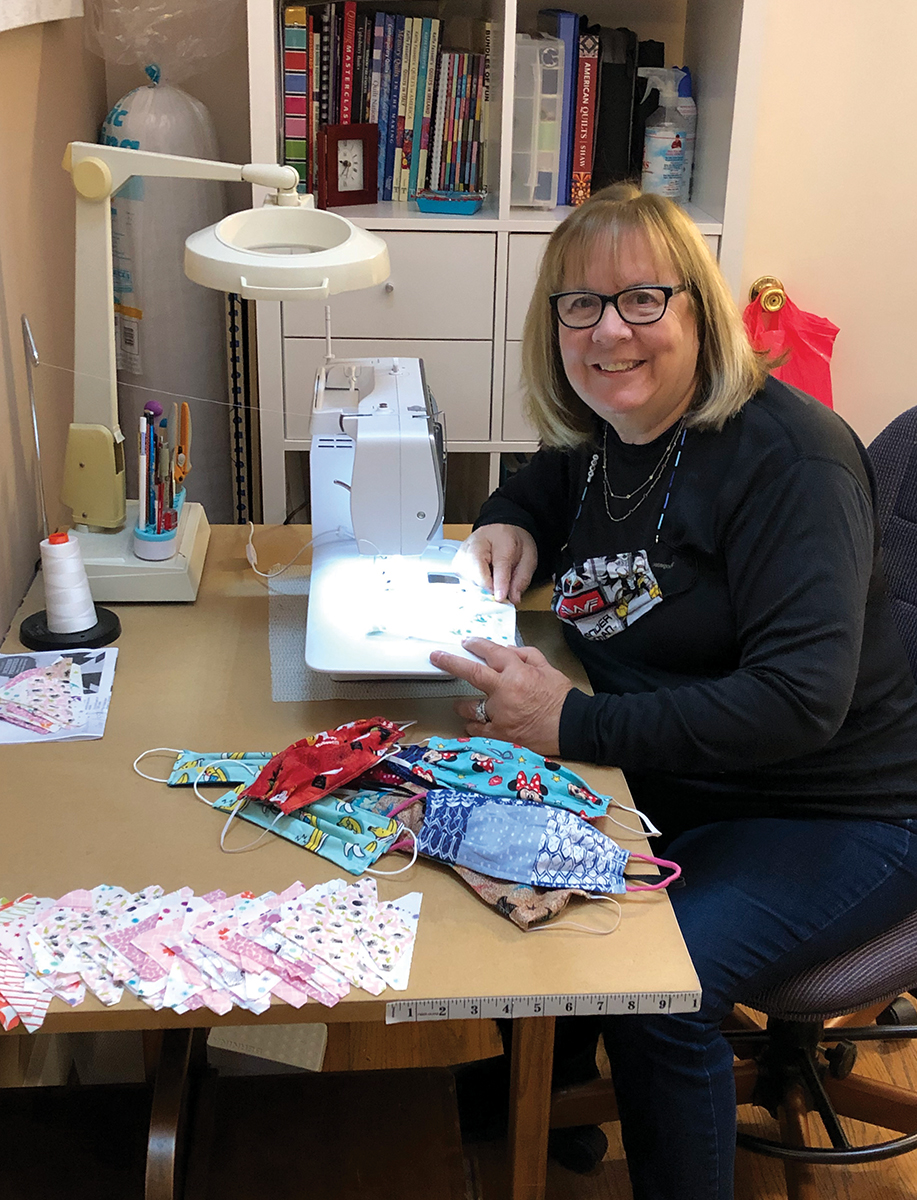
During COVID…Sandi Myer made more than 2,000 masks
Q: What inspired you to start making masks?
A: I retired from teaching more than 10 years ago and started doing all the things I like to do—playing tennis, mahjong, bridge (which is like learning a foreign language!). One of my tennis friends inspired me to start quilting. I always sewed a little—I’d make costumes for my three daughters when they were little—but never considered myself particularly artistic. Maybe that’s because I’m married to an artist.
But as I quilted more and more, I fell in love with the fabric. There are so many gorgeous fabrics out there, and I ended up buying a lot of them. Which means you’ve got to do something with them. My friend taught me to develop a stash, which is a collection of fabrics that you know will eventually go together.
Then, as we had more time at home, I had more time to create. As soon as we realized masks were needed, I Googled “how to make a mask” and dipped into my fabric stash.
Q: How many masks have you made so far?
A: I’ve made over 2,000. I pace myself throughout the day. I’ll make five in the morning before I go downstairs for breakfast. And my friends and I have little goals we try to hit. One person might say, “This nursing home needs 200 masks,” and we’ll all get
busy and whip them out.
My oldest and youngest daughters are teachers, and when they went back to work in the fall, their schools gave them face shields. But those are no good without a mask! So, I made masks for my daughters and their colleagues.
When my oldest granddaughter was going to college, I made sure she had 15 masks so she could go two weeks without doing laundry and have a clean mask every day. Because let’s face it, what college student does laundry regularly? And what good is a mask if you don’t wash it every day?
Q: It sounds like you’ve been a mask-making machine. Do you watch TV or listen to music while you’re sewing?
A: I make the masks in a sewing area just outside my bedroom, which is open to the rest of the house and has skylights above me. There’s a TV in my bedroom that I’ll turn on to listen to the news—but at a certain point during the pandemic, that got really tedious. Then, my daughter, Jess, turned me on to listening to books on Audible. That was fabulous! Now, I’ll sit and sew much longer than I otherwise would because I want to hear the rest of the story.
Q: What’s your best advice for other women who want to take this time to create something—or to give back in some way?
A: Look at your bucket list and see what you really want to do. As a teacher, giving back is important to me. Before I started making masks, I made pillowcases for kids with cancer through an organization called Ryan’s Cases for Smiles. Then, when we realized our collective need for masks—hospitals, police departments, teachers—I switched gears.
So, I’d say think about what you like to do and then do it! I have these hooks sitting near my sewing machine that I hang masks on as I make them. It’s fun to see them build up as I go. And it feels good knowing that while I’m not in the medical field—I can’t be one of those heroes—this is something I can do.

During COVID…Meghan Rabbitt Made Bread
Shortly before the U.S. shut down last March, I went to Whole Foods for a “zombie apocalypse shop.” It felt a little like Supermarket Sweep, where contestants filled their carts with the most expensive groceries—only this time, the name of the game was anything shelf-stable or freezer-friendly. I knew we were in for strange times when I saw a woman toss 12 bags of organic oatmeal into her cart. Twelve.
As I frantically rolled my cart through the aisles, picking through what was left of the pasta and keeping my fingers crossed that I’d find a few cans of beans, it was clear we were about to settle into uncertain times—and that I might need to get a little creative when it came to what we’d eat.
I started baking beer bread—a mix of flour, salt, beer, and a packet of instant yeast—that was surprisingly delicious and just the carb-bomb my riled-up nervous system needed. But I ran out of yeast after a few loaves, and when I went back to the store a few weeks later, those yeast packets were gone. I couldn’t even find them on Amazon. Apparently, everyone was stress-baking. This lack of yeast—coupled with the fact that my social media feeds were brimming with lovely loaves of all shapes and sizes—inspired me to give sourdough a go.
I procured a starter from a bakery that charged me $7 for “discard” they would have just tossed anyway. Then, I bought two 2-pound bags of bread flour at $18 a pop from that same bakery because we were in a pandemic, damnit, and didn’t we deserve heirloom wheat flour?
I ordered a book on how to bake sourdough that almost made me abandon the process, but when I mentioned this to a friend, she texted me a link to a simple recipe complete with how-to videos. It yielded a delicious loaf on my first try.
However, I’ve come to learn that sourdough is not an instant-gratification endeavor. Yet, something about the simple-yet-involved steps mirrored what we were collectively going through. We were being asked to stay at home—easy peasy. But once the joy of Netflix binges lost their appeal, we had to stare down the reality that all of our new restrictions were keeping us from the stuff that makes life, well, life: having friends over for dinner, a trip to the museum, going out to eat, traveling to another country, and not thinking twice about any of it. And I don’t know about you but putting my finger on that was a process that made me feel all the feels. Feels that a slice of freshly baked sourdough slathered with Irish butter made a lot easier to swallow.
After my first few successful sourdough attempts, I bought all the things. I’m now the proud owner of two banneton baskets, linen covers for said baskets, a bench scraper, and a bread lame. I’ve made bread for friends and for our 75-year-old neighbor. I’ve spent an entire paycheck on fancy flour. And when life felt darkest, I turned my kitchen into something that could’ve passed for the set of The Great British Pandemic Bake-Off, taking out my pent-up anger on balls of dough and making something simple, yet fundamental—during the simplest, yet most complicated—a moment of our lifetime.
Ten months later, I still make a loaf of sourdough every week. There’s something so satisfying about our house filling with the smell of fresh-baked bread. There’s nothing quite like taking that first bite or seeing the smile-inducing delight it prompts in my beloved. And while my Bâtards and Boulés haven’t taken away the stress, disappointment, and grief this year has brought, they have made it all go down a bit easier.
Especially when slathered in Irish butter.

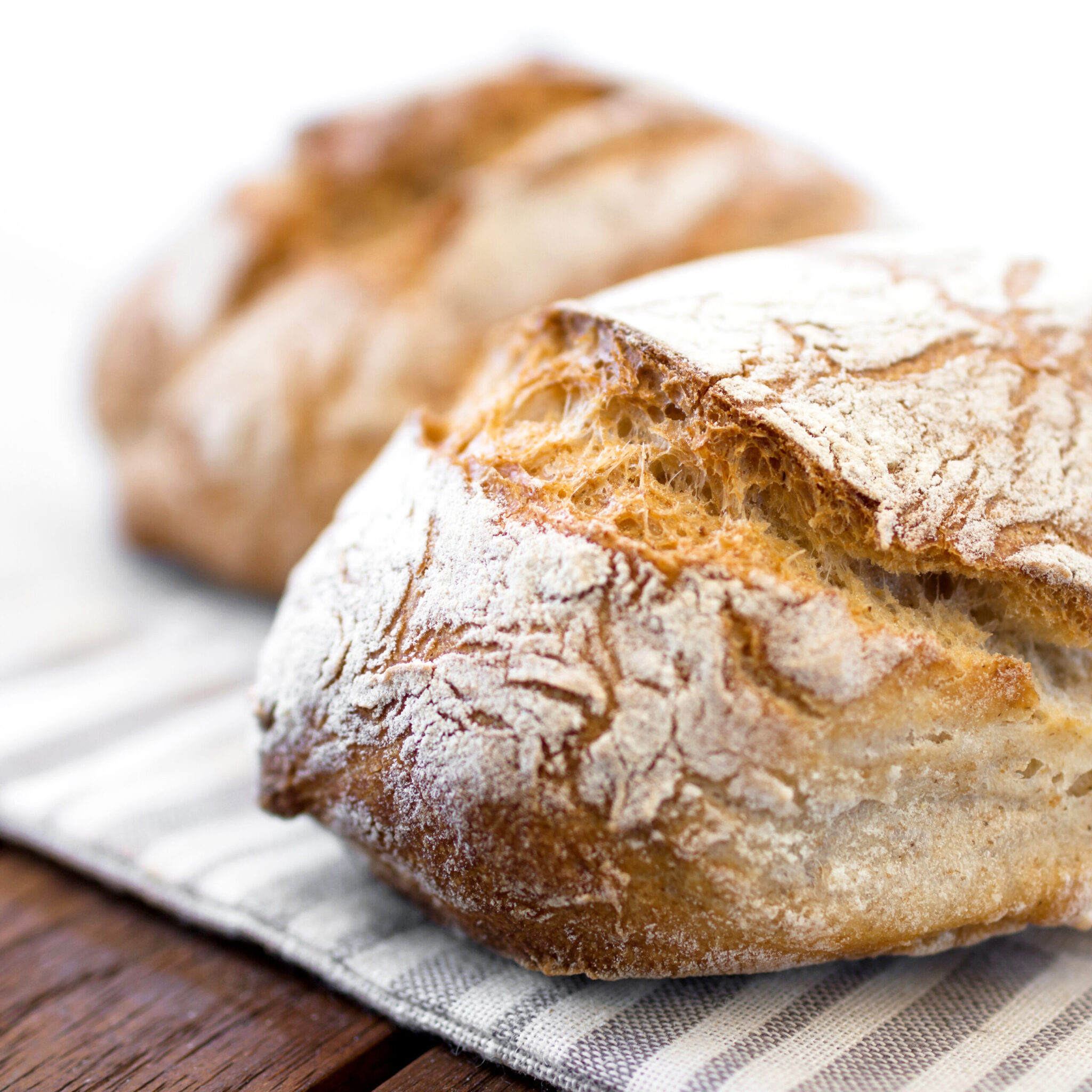
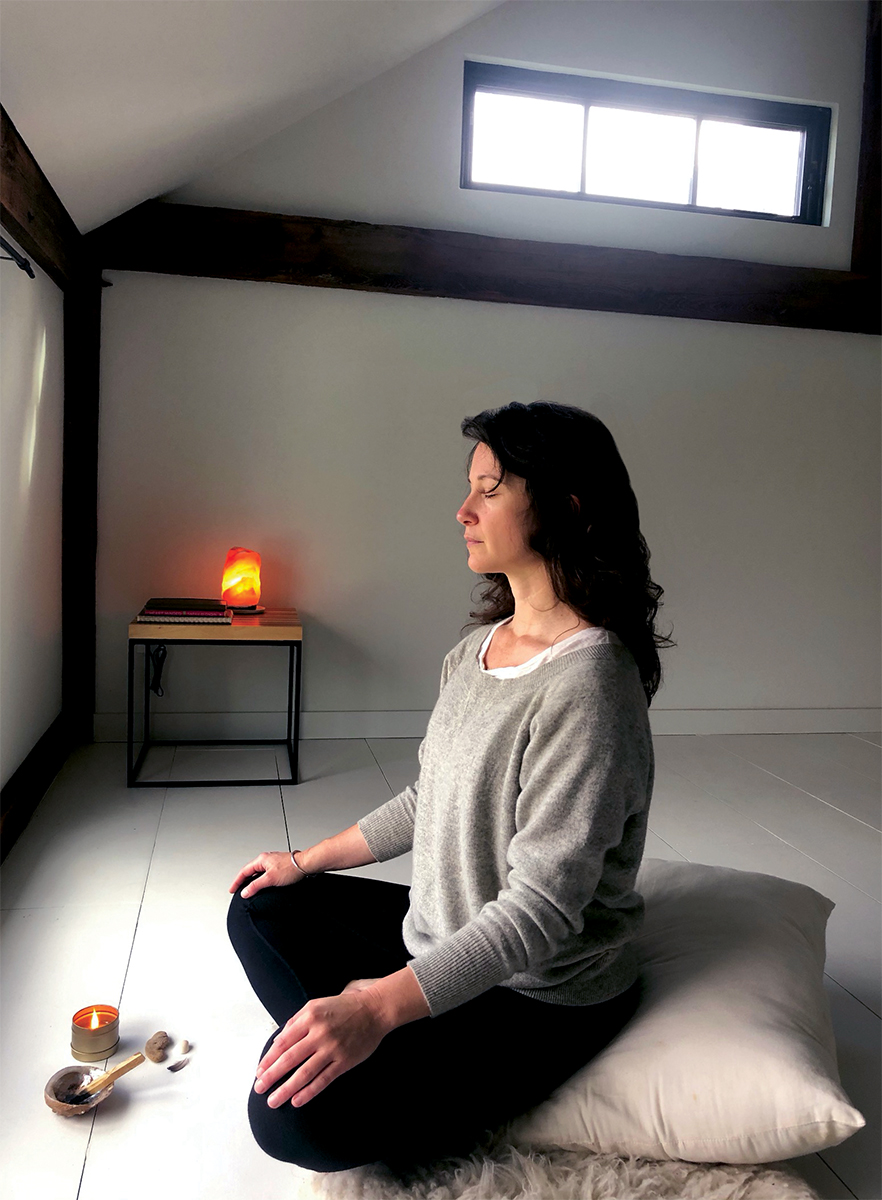
During COVID…Jackie Ney became a Reiki master
What is this beautiful, powerful voodoo magic?”
I’ll never forget saying those words after my first Reiki session about 10 years ago. It was during a time in my life when I felt stuck—both in a long-term relationship that wasn’t serving me and in a job that was making me miserable—and I needed something to help me get unstuck. When a massage therapist told me she also did Reiki and thought I would benefit from a session, I jumped at the chance.
What I mostly remember about that first Reiki experience is the bliss and clarity I felt afterward. I didn’t know what was smoking in the corner (turns out it was a bundle of sage) or why there were so many crystals in her office, but I knew I wanted more of what she had just served up.
That Reiki master helped me tremendously over the course of the next couple of years. Then, I moved away and got interested in other healing modalities. But when 2018 rolled around and I was feeling a bit stuck again, this time in other aspects of my life, I thought, I need Reiki. Sure enough, I found another practitioner and had a handful of incredibly powerful sessions. During one of those sessions, this Reiki master suggested I take a training to learn more about this practice that seemed to resonate with me so much.
The following year, I did another training, which enabled me to start practicing on others. Soon, I had a small posse of women I was working with, seeing them in a room attached to a local yoga studio. Then the pandemic struck, and life as we knew it came to a grinding halt, including Reiki.
When I spoke to my teacher, who was doing distance sessions with her clients, she encouraged me to try virtual appointments as well. At an agreed-upon time with my client, I would sit in meditation as she relaxed—whether that meant laying down under a cozy blanket or taking a meditative walk. Just like what happens during in-person sessions, when my hands might be gently touching someone’s body or hovering over it, I would work virtually to move energy that was stagnant and tap into the “universal energy.”
I was skeptical. But my teacher reminded me that in Reiki, energy has no time or space. It transcends all of that stuff. Which means that if I can hold space in the physical realm, why shouldn’t I be able to hold space for people in the energy realm?
I started seeing a few of my clients from a distance, and those sessions were every bit as deep and powerful as the ones I’d been doing in person. As I got even more comfortable in my skills and started to embrace that I had something to offer, I called my teacher again and asked if she thought I was ready to take my Reiki master training. Not only was I ready, she told me, but the timing was perfect. After all, we were cut off from so much. The pandemic was a time to be quiet and introspective, and it gave me the breathing room I needed to concentrate on the readings and studying that would be required. Suddenly, I started to think about the lockdown as a gift—a void that made way for this training. In August, I spent 2 magical days on a beach in Ocean City, completing my Reiki master training with my teacher.
I’m still stepping fully into this new role as a master Reiki practitioner, and I know there’s so much I have yet to learn. Yet, as I continue to do the work, I’ll forever be grateful for the time the pandemic gave me to turn toward this practice that has given me so much.
Interested in learning more about reiki or working with Jackie Ney? Visit jackieney.com for more info.

